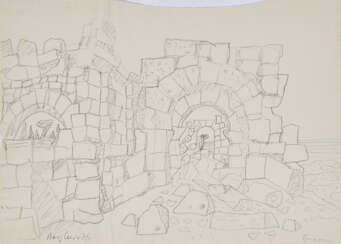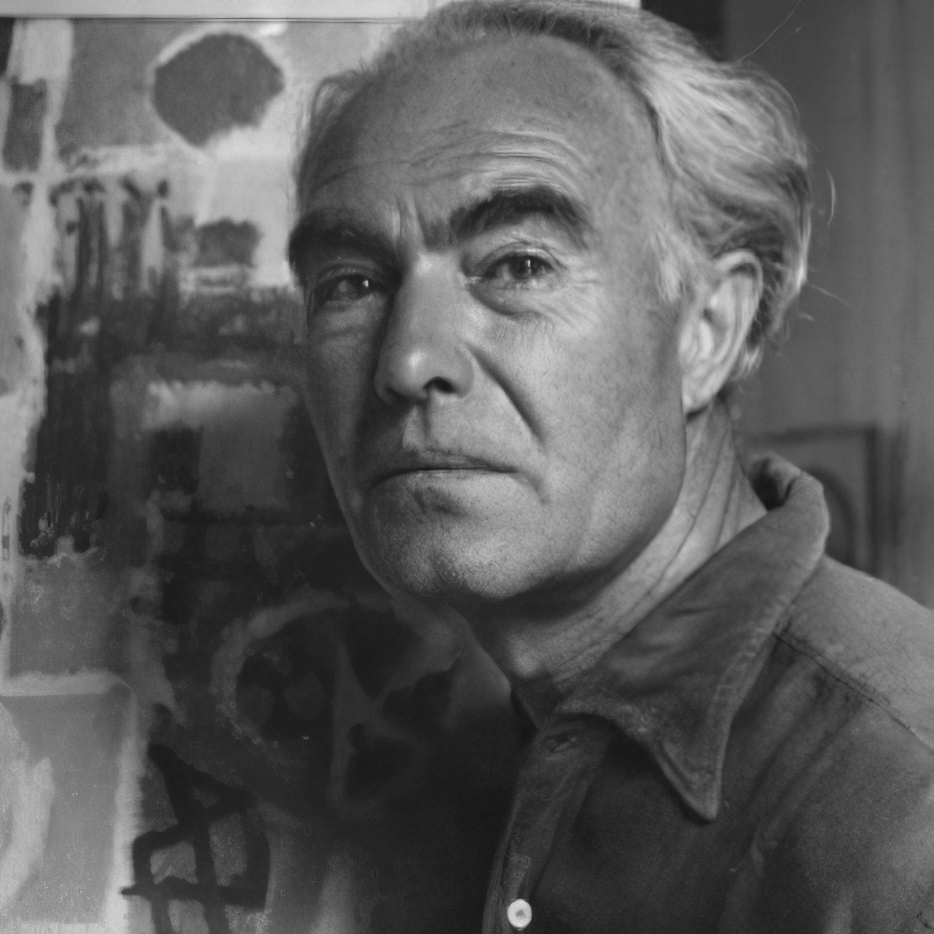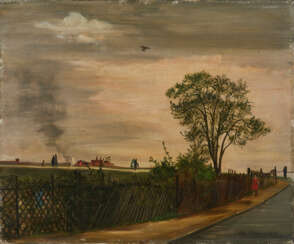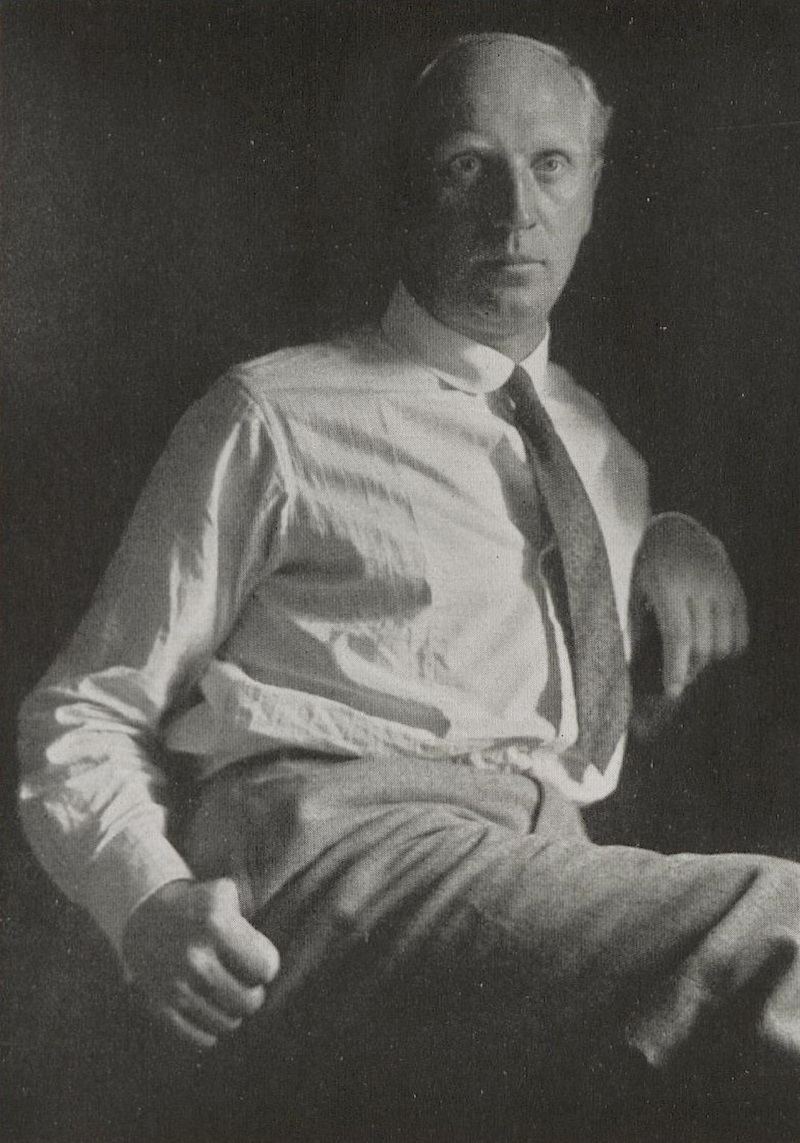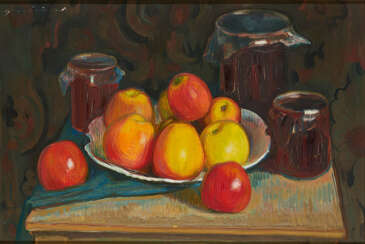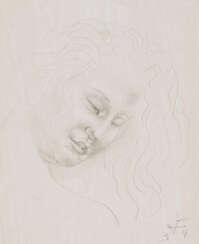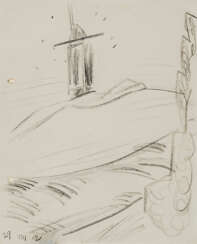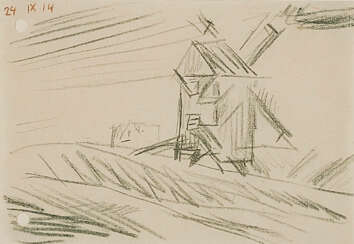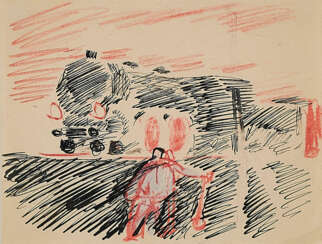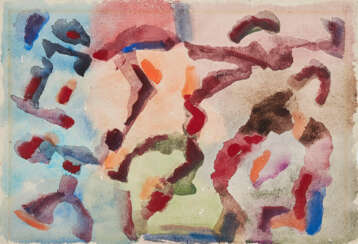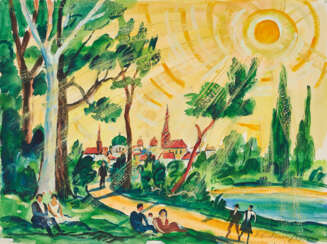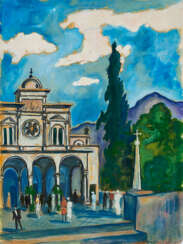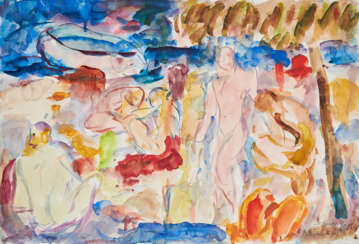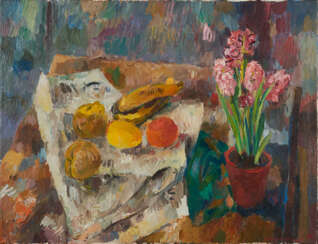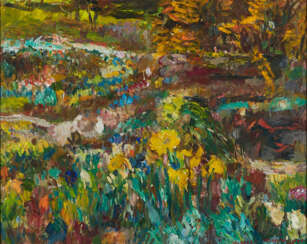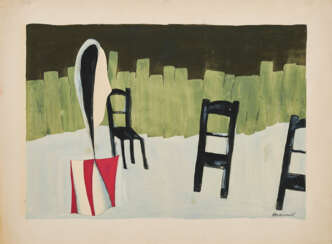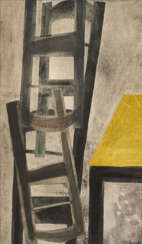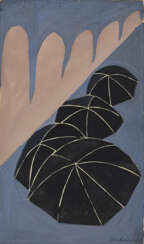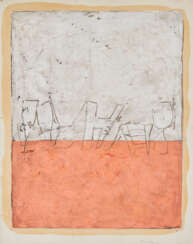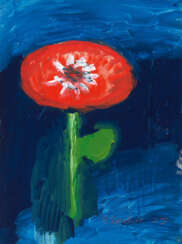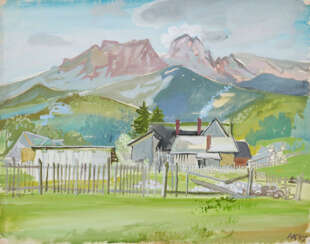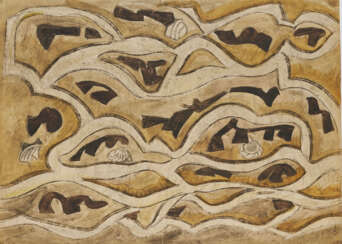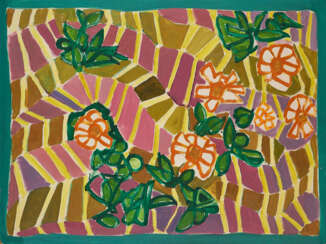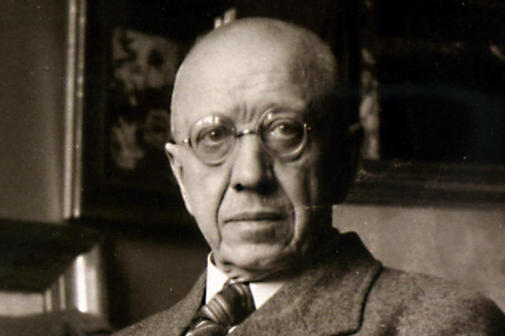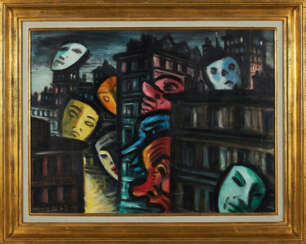
Modern Art — Modern art

Wilhelm Heinrich Otto Dix was a German artist whose work stands as a stark, unyielding reflection of the societal tumult and trauma of the early 20th century. Born in 1891 in Untermhaus, Germany, Dix's early life was steeped in the arts, his ambition to become an artist nurtured by both familial influence and formal education in Dresden. His experiences as a soldier in World War I deeply influenced his artistic direction, leading him to vividly depict the horrors of war and the decay of the Weimar Republic with a brutal realism that became his signature style.
Dix's association with the Dada movement and the New Objectivity (Neue Sachlichkeit) further honed his critical, often cynical portrayal of post-war society. His works, such as "The Trench" and "War Cripples," expose the visceral aftermath of conflict, while his engagement with the Dadaists imbued his art with a disruptive, confrontational energy against societal norms and the art establishment.
Perhaps most notable is Dix's ability to capture the psychological depth and societal critiques through his portraits and landscapes, which ranged from the grotesque to the surreal. Paintings like "Portrait of the Journalist Sylvia von Harden" and the triptychs "Metropolis" and "War" are emblematic of his keen observation and stark depiction of the era's social and political unrest.
Despite facing significant adversity, including being labeled a degenerate artist by the Nazi regime and facing professional and personal setbacks, Dix's legacy as a painter and printmaker endures. His works are not only historical documents but also profound reflections on humanity, war, and society, resonating with collectors and art experts alike.
For enthusiasts of culture, art, and history, Dix's oeuvre offers an unflinching look into the human condition under the strain of societal and political upheaval. His contributions to painting and printmaking continue to be celebrated in museums and galleries worldwide, underscoring the enduring relevance of his work.
For those interested in exploring the profound depth and historical significance of Otto Dix's work, signing up for updates on new product sales and auction events related to his art can provide invaluable insights. This subscription is a gateway to staying informed about opportunities to engage with the tangible pieces of Dix's enduring legacy.
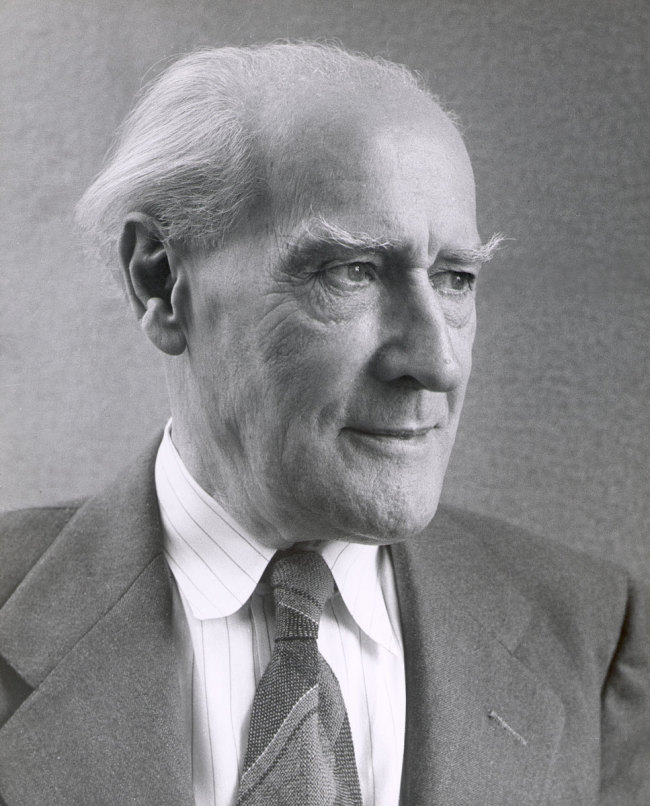
Lyonel Charles Adrian Feininger was an American-German artist renowned for his unique integration of Expressionism, Cubism, and Bauhaus principles. His body of work, which spans several critical decades in modernism's development, is celebrated for its distinctive blend of architectural and nautical motifs, articulated through planar shifts and jagged lines of Cubism, with a vibrant Orphist color palette.
Lyonel Feininger's journey as an artist began in earnest when he was 36, becoming a pivotal figure in various German expressionist groups and a founding member of the Bauhaus, where he led the printmaking workshop. His art, which also includes significant contributions to caricature and photography, explores the intricate relationship between humanity and industrialization, evident in his depictions of architectural and mechanized forms.
His work was subject to Nazi criticism, being labeled as "degenerate," which led to his return to the United States, where he continued to evolve his artistic style. Posthumously, Lyonel Feininger's art has been the focus of several retrospectives, and his pieces, like "Jesuits III," continue to fetch high figures at auctions, underscoring his lasting impact on the art world.
Notably, Lyonel Feininger's "Cathedral" woodcut, representing the Bauhaus's utopian vision, remains one of his most iconic works, symbolizing the integration of art and craftsmanship with its avant-garde yet traditional approach. His legacy is further carried by his sons, Andreas and T. Lux Feininger, who also made their marks in the arts.
For collectors and art and antiques experts, Feininger's work represents a fascinating intersection of various art movements and a testament to the enduring nature of expressive and innovative artistry. To stay updated on new product sales and auction events related to Lyonel Feininger, consider signing up for updates, ensuring you're informed about the latest opportunities to engage with his enduring legacy.

Lyonel Charles Adrian Feininger was an American-German artist renowned for his unique integration of Expressionism, Cubism, and Bauhaus principles. His body of work, which spans several critical decades in modernism's development, is celebrated for its distinctive blend of architectural and nautical motifs, articulated through planar shifts and jagged lines of Cubism, with a vibrant Orphist color palette.
Lyonel Feininger's journey as an artist began in earnest when he was 36, becoming a pivotal figure in various German expressionist groups and a founding member of the Bauhaus, where he led the printmaking workshop. His art, which also includes significant contributions to caricature and photography, explores the intricate relationship between humanity and industrialization, evident in his depictions of architectural and mechanized forms.
His work was subject to Nazi criticism, being labeled as "degenerate," which led to his return to the United States, where he continued to evolve his artistic style. Posthumously, Lyonel Feininger's art has been the focus of several retrospectives, and his pieces, like "Jesuits III," continue to fetch high figures at auctions, underscoring his lasting impact on the art world.
Notably, Lyonel Feininger's "Cathedral" woodcut, representing the Bauhaus's utopian vision, remains one of his most iconic works, symbolizing the integration of art and craftsmanship with its avant-garde yet traditional approach. His legacy is further carried by his sons, Andreas and T. Lux Feininger, who also made their marks in the arts.
For collectors and art and antiques experts, Feininger's work represents a fascinating intersection of various art movements and a testament to the enduring nature of expressive and innovative artistry. To stay updated on new product sales and auction events related to Lyonel Feininger, consider signing up for updates, ensuring you're informed about the latest opportunities to engage with his enduring legacy.

Lyonel Charles Adrian Feininger was an American-German artist renowned for his unique integration of Expressionism, Cubism, and Bauhaus principles. His body of work, which spans several critical decades in modernism's development, is celebrated for its distinctive blend of architectural and nautical motifs, articulated through planar shifts and jagged lines of Cubism, with a vibrant Orphist color palette.
Lyonel Feininger's journey as an artist began in earnest when he was 36, becoming a pivotal figure in various German expressionist groups and a founding member of the Bauhaus, where he led the printmaking workshop. His art, which also includes significant contributions to caricature and photography, explores the intricate relationship between humanity and industrialization, evident in his depictions of architectural and mechanized forms.
His work was subject to Nazi criticism, being labeled as "degenerate," which led to his return to the United States, where he continued to evolve his artistic style. Posthumously, Lyonel Feininger's art has been the focus of several retrospectives, and his pieces, like "Jesuits III," continue to fetch high figures at auctions, underscoring his lasting impact on the art world.
Notably, Lyonel Feininger's "Cathedral" woodcut, representing the Bauhaus's utopian vision, remains one of his most iconic works, symbolizing the integration of art and craftsmanship with its avant-garde yet traditional approach. His legacy is further carried by his sons, Andreas and T. Lux Feininger, who also made their marks in the arts.
For collectors and art and antiques experts, Feininger's work represents a fascinating intersection of various art movements and a testament to the enduring nature of expressive and innovative artistry. To stay updated on new product sales and auction events related to Lyonel Feininger, consider signing up for updates, ensuring you're informed about the latest opportunities to engage with his enduring legacy.
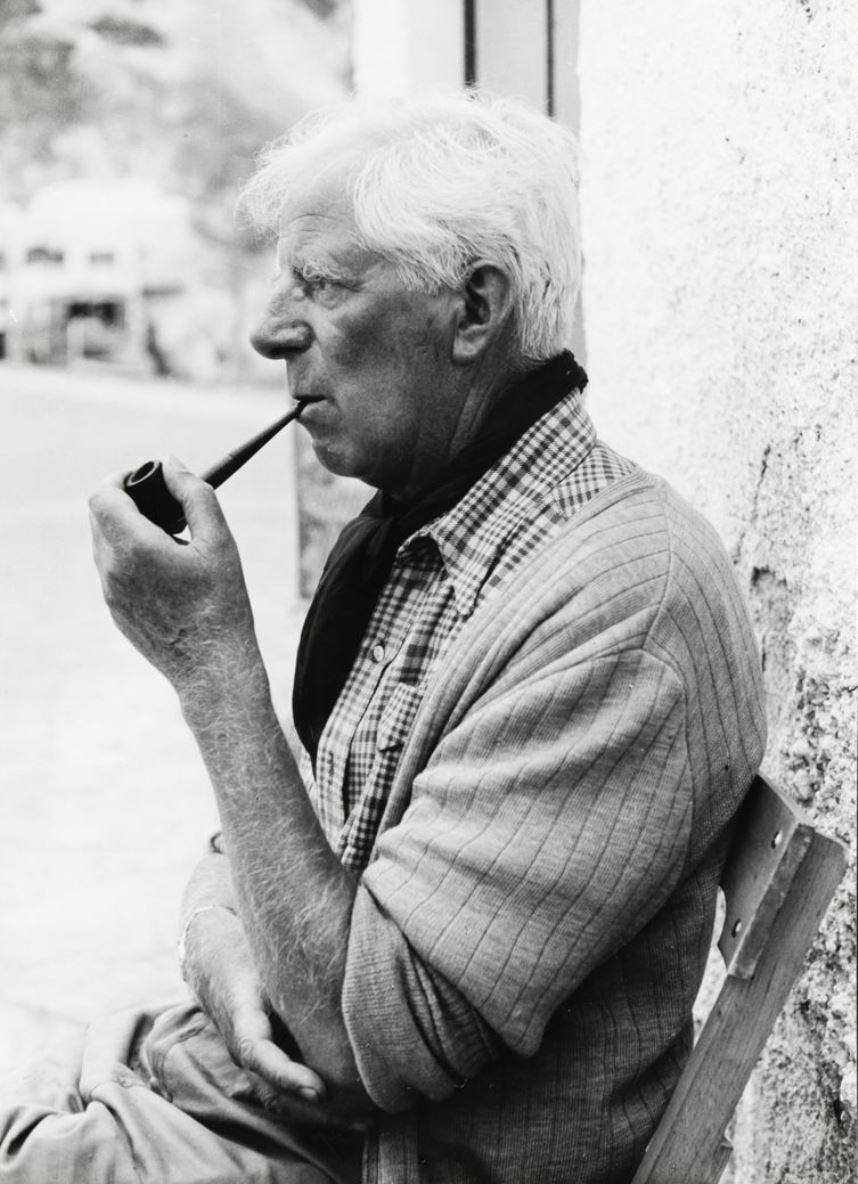
Werner Gilles was a German artist.
He was a member of the Bauhaus school of art and design. After arriving on the Italian island of Ischia in 1932, Gilles found inspiration for painting. In his oil paintings and watercolors, the artist depicts the cheerful and menacing aspects of this primitive landscape and captures its basic nature.
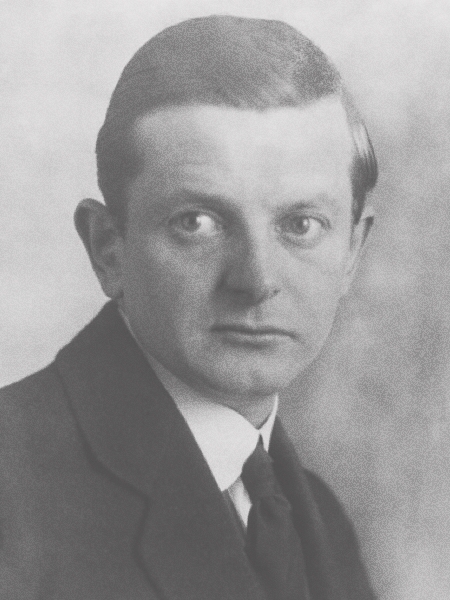
Franz Heckendorf was a German painter and graphic artist who was particularly successful during the Weimar Republic. During the National Socialist era, he was sentenced to ten years in prison after helping Berlin Jews threatened with deportation to extermination camps to escape to Switzerland.

Franz Heckendorf was a German painter and graphic artist who was particularly successful during the Weimar Republic. During the National Socialist era, he was sentenced to ten years in prison after helping Berlin Jews threatened with deportation to extermination camps to escape to Switzerland.

Franz Heckendorf was a German painter and graphic artist who was particularly successful during the Weimar Republic. During the National Socialist era, he was sentenced to ten years in prison after helping Berlin Jews threatened with deportation to extermination camps to escape to Switzerland.
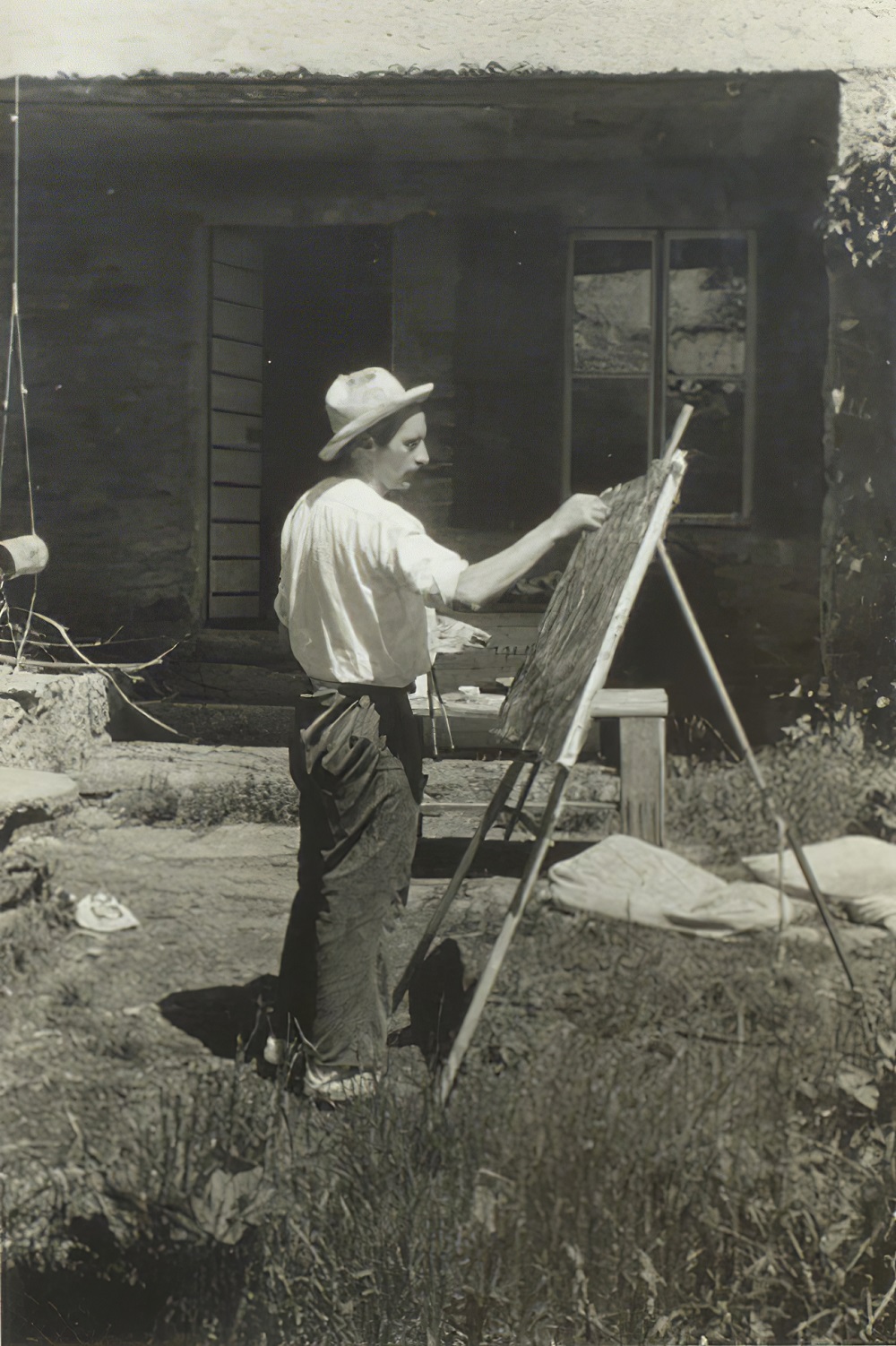
Manfred Henninger was a German painter, draughtsman, graphic artist, ceramist and university lecturer. As an artist, he belongs to the lost generation.
His works often revolve around the themes of the human figure and landscape and can be described as late impressionist.
Manfred Henninger was a member of the Deutscher Künstlerbund.

Manfred Henninger was a German painter, draughtsman, graphic artist, ceramist and university lecturer. As an artist, he belongs to the lost generation.
His works often revolve around the themes of the human figure and landscape and can be described as late impressionist.
Manfred Henninger was a member of the Deutscher Künstlerbund.

Manfred Henninger was a German painter, draughtsman, graphic artist, ceramist and university lecturer. As an artist, he belongs to the lost generation.
His works often revolve around the themes of the human figure and landscape and can be described as late impressionist.
Manfred Henninger was a member of the Deutscher Künstlerbund.
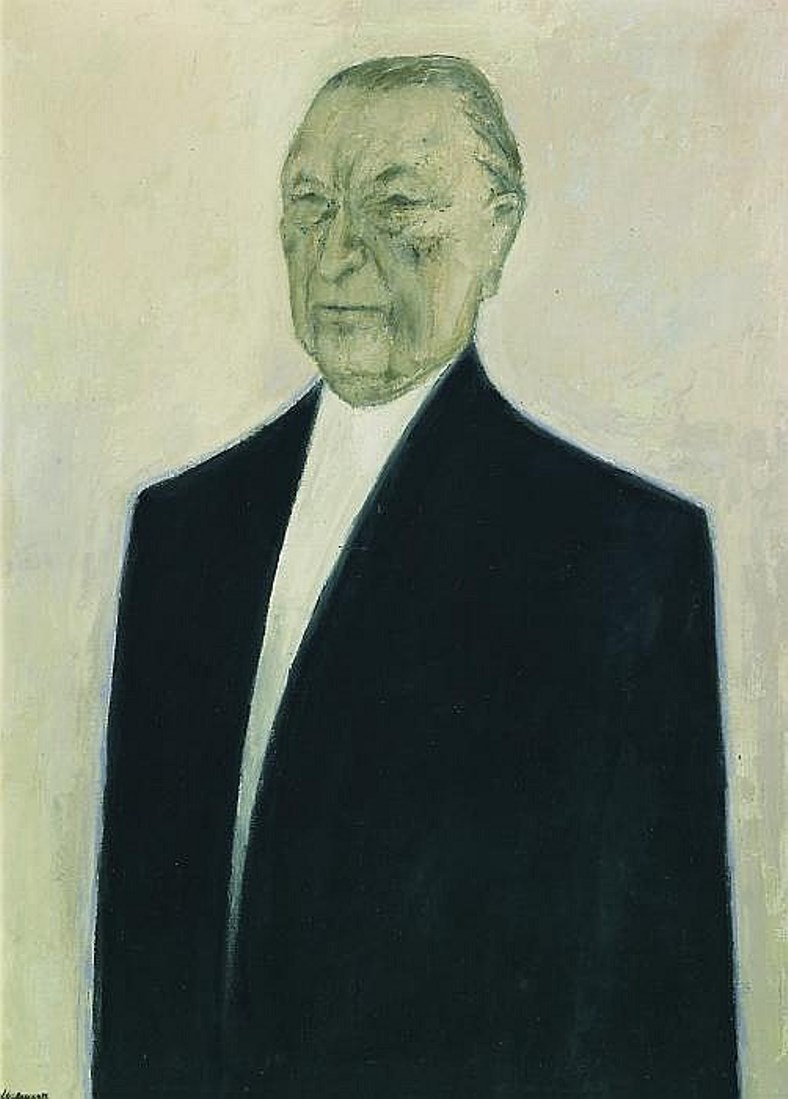
Peter Herkenrath was a German self-taught artist, one of the brightest representatives of abstract art after World War II.
He created what he called "wall paintings": he applied thick layers of paint in relief with spatulas and brushes. Herkenrath painted many portraits of his famous contemporaries, domestic scenes and still lifes.
Peter Herkenrath was a member of the Association of West German Artists and the Association of German Artists.

Peter Herkenrath was a German self-taught artist, one of the brightest representatives of abstract art after World War II.
He created what he called "wall paintings": he applied thick layers of paint in relief with spatulas and brushes. Herkenrath painted many portraits of his famous contemporaries, domestic scenes and still lifes.
Peter Herkenrath was a member of the Association of West German Artists and the Association of German Artists.

Peter Herkenrath was a German self-taught artist, one of the brightest representatives of abstract art after World War II.
He created what he called "wall paintings": he applied thick layers of paint in relief with spatulas and brushes. Herkenrath painted many portraits of his famous contemporaries, domestic scenes and still lifes.
Peter Herkenrath was a member of the Association of West German Artists and the Association of German Artists.

Peter Herkenrath was a German self-taught artist, one of the brightest representatives of abstract art after World War II.
He created what he called "wall paintings": he applied thick layers of paint in relief with spatulas and brushes. Herkenrath painted many portraits of his famous contemporaries, domestic scenes and still lifes.
Peter Herkenrath was a member of the Association of West German Artists and the Association of German Artists.
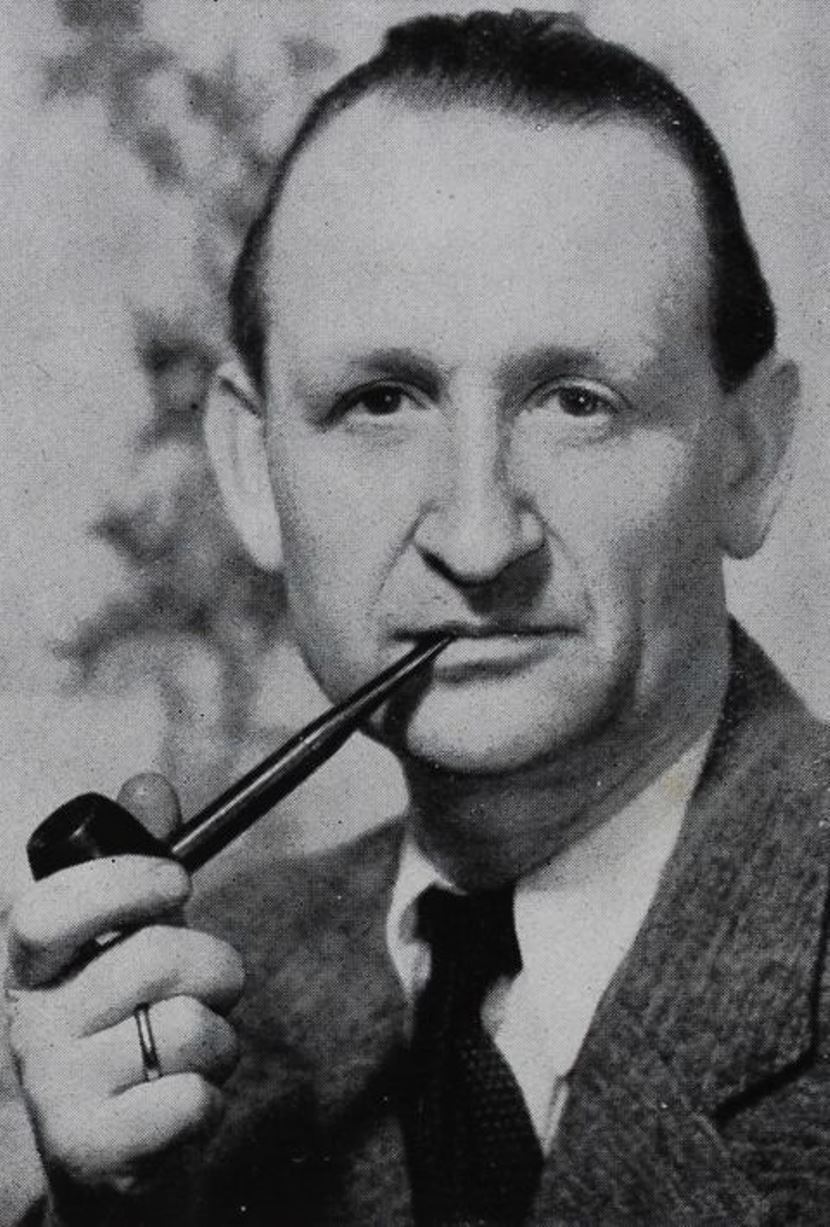
Heinrich Kamps or Heinz Kamps was a German painter and director of the Düsseldorf Academy of Fine Arts.
In 1922, Kamps first presented his work to the public by participating in an exhibition of the artists' association "Das Junge Rheinland". Soon, in 1925, he was already appointed professor at the Düsseldorf Academy of Fine Arts, and four years later he took over the management of the State Art School in Berlin-Schöneberg.
During the Nazi "Degenerate Art" campaign in 1937, Kamps' works were confiscated and lost. In 1941 he was forced to leave for Austria and then Poland; in 1943 his Berlin studio was bombed by the Allies and almost all of his early works destroyed.
After the end of World War II, in 1946 Kamps was elected professor and director of the newly opened Düsseldorf Academy of Art, which he directed until his death.

Heinrich Kamps or Heinz Kamps was a German painter and director of the Düsseldorf Academy of Fine Arts.
In 1922, Kamps first presented his work to the public by participating in an exhibition of the artists' association "Das Junge Rheinland". Soon, in 1925, he was already appointed professor at the Düsseldorf Academy of Fine Arts, and four years later he took over the management of the State Art School in Berlin-Schöneberg.
During the Nazi "Degenerate Art" campaign in 1937, Kamps' works were confiscated and lost. In 1941 he was forced to leave for Austria and then Poland; in 1943 his Berlin studio was bombed by the Allies and almost all of his early works destroyed.
After the end of World War II, in 1946 Kamps was elected professor and director of the newly opened Düsseldorf Academy of Art, which he directed until his death.

Heinrich Kamps or Heinz Kamps was a German painter and director of the Düsseldorf Academy of Fine Arts.
In 1922, Kamps first presented his work to the public by participating in an exhibition of the artists' association "Das Junge Rheinland". Soon, in 1925, he was already appointed professor at the Düsseldorf Academy of Fine Arts, and four years later he took over the management of the State Art School in Berlin-Schöneberg.
During the Nazi "Degenerate Art" campaign in 1937, Kamps' works were confiscated and lost. In 1941 he was forced to leave for Austria and then Poland; in 1943 his Berlin studio was bombed by the Allies and almost all of his early works destroyed.
After the end of World War II, in 1946 Kamps was elected professor and director of the newly opened Düsseldorf Academy of Art, which he directed until his death.

Heinrich Kamps or Heinz Kamps was a German painter and director of the Düsseldorf Academy of Fine Arts.
In 1922, Kamps first presented his work to the public by participating in an exhibition of the artists' association "Das Junge Rheinland". Soon, in 1925, he was already appointed professor at the Düsseldorf Academy of Fine Arts, and four years later he took over the management of the State Art School in Berlin-Schöneberg.
During the Nazi "Degenerate Art" campaign in 1937, Kamps' works were confiscated and lost. In 1941 he was forced to leave for Austria and then Poland; in 1943 his Berlin studio was bombed by the Allies and almost all of his early works destroyed.
After the end of World War II, in 1946 Kamps was elected professor and director of the newly opened Düsseldorf Academy of Art, which he directed until his death.
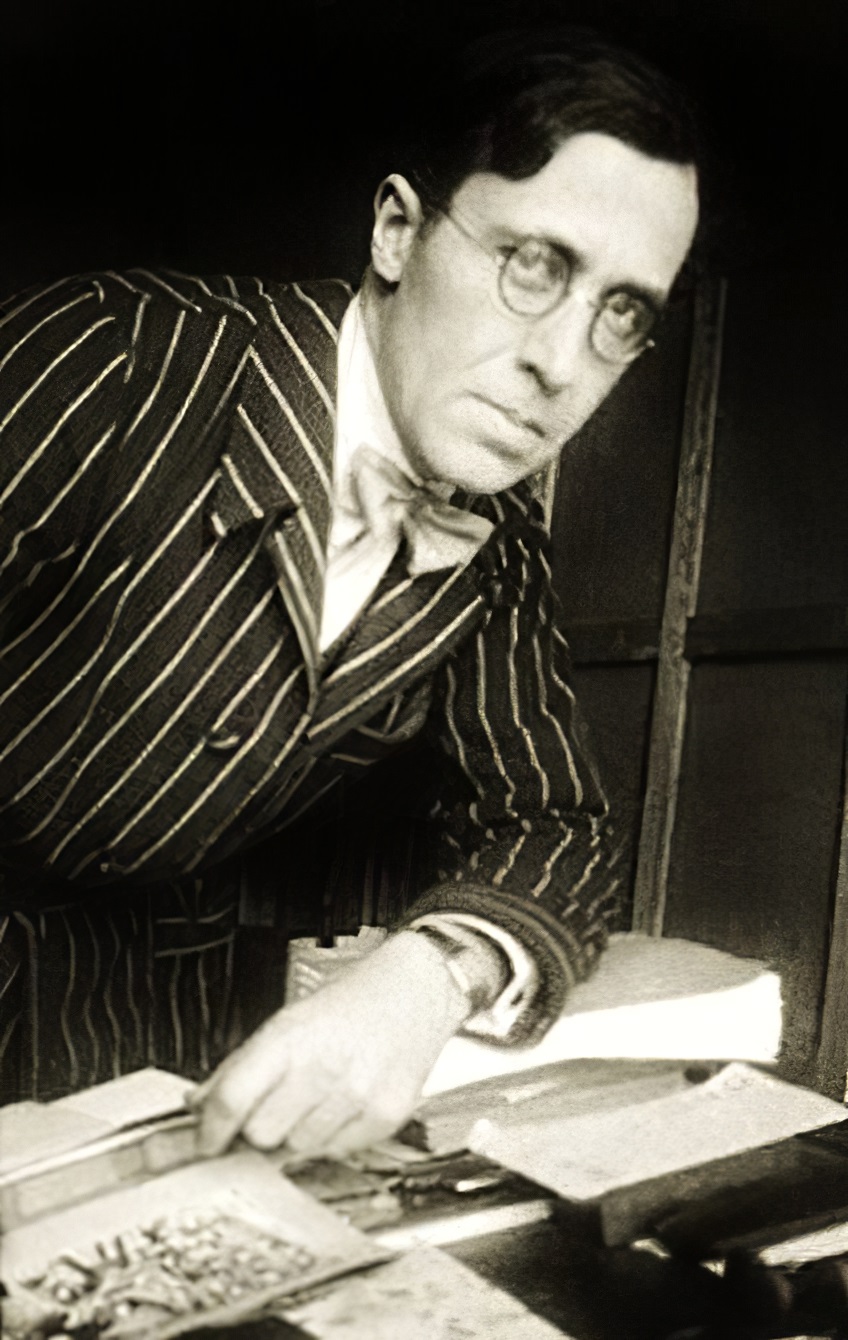
Frans Masereel was a Flemish painter and graphic artist who worked mainly in France, known especially for his woodcuts focused on political and social issues, such as war and capitalism. He completed over 40 wordless novels in his career, and among these, his greatest is generally said to be Passionate Journey.
Masereel's woodcuts influenced Lynd Ward and later graphic artists such as Clifford Harper, Eric Drooker, and Otto Nückel.

Frans Masereel was a Flemish painter and graphic artist who worked mainly in France, known especially for his woodcuts focused on political and social issues, such as war and capitalism. He completed over 40 wordless novels in his career, and among these, his greatest is generally said to be Passionate Journey.
Masereel's woodcuts influenced Lynd Ward and later graphic artists such as Clifford Harper, Eric Drooker, and Otto Nückel.

Frans Masereel was a Flemish painter and graphic artist who worked mainly in France, known especially for his woodcuts focused on political and social issues, such as war and capitalism. He completed over 40 wordless novels in his career, and among these, his greatest is generally said to be Passionate Journey.
Masereel's woodcuts influenced Lynd Ward and later graphic artists such as Clifford Harper, Eric Drooker, and Otto Nückel.

Frans Masereel was a Flemish painter and graphic artist who worked mainly in France, known especially for his woodcuts focused on political and social issues, such as war and capitalism. He completed over 40 wordless novels in his career, and among these, his greatest is generally said to be Passionate Journey.
Masereel's woodcuts influenced Lynd Ward and later graphic artists such as Clifford Harper, Eric Drooker, and Otto Nückel.
